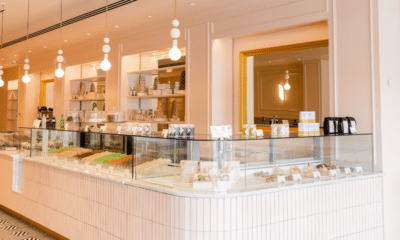Community
The Holidays Are Coming
Published
2 years agoon
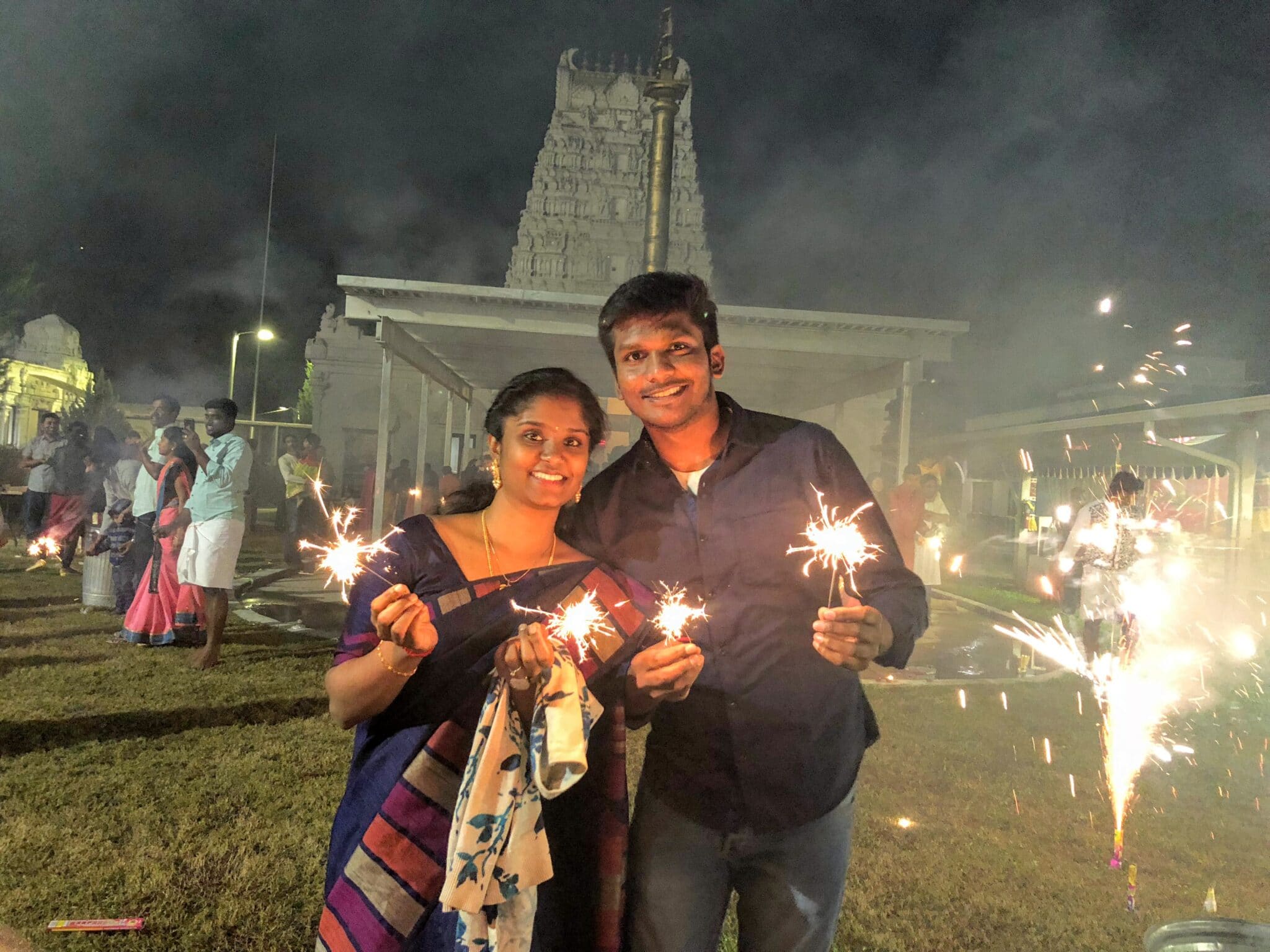
How Peachtree Corners sparkles during the holiday season
The holidays are upon us, and what ignites the holiday spirit within us can be as unique as our fingerprints. Decorations, traditions and holiday carols do it for this Catholic Canadian of Italian heritage, now American – it begins with that first slice of panettone, an Italian sweet bread.
When the house is brimming with cards, garlands, ribbon, the irresistible aroma of baked cookies, beautifully wrapped presents, all set aglow by the soaring North Carolina Frasier Fir glimmering in the living room — its angel topper precariously perched yet sweetly smiling down upon my family from the top — it feels like Christmas.
Psst! I slip baby Jesus into the manger as soon as I set up the nativity, knowing full well I’m supposed to wait until Christmas.
The anticipation of Christmas Eve mass is almost more than I can bear; it inexplicably fills me with the purest feeling that all is right in the world. Of course, Christmas morning has its own charms — comfy jammies, fun surprises and the joy of spoiling our loved ones. Since I love the season so much, I wondered what fellow residents of Peachtree Corners cherished most about their holidays.
What do the holidays mean to you?
Diversity is part of what makes Peachtree Corners special. Multiple faiths and backgrounds are represented here, and within each of those, different aspects of religious and cultural observances are responsible for the city’s unique holiday sparkle, bringing cheer to all.
My gift to you is a glimpse into an assortment of revelries that may differ in many ways from your own, but for one common denominator — they all bring warmth and light to an otherwise cold and dark time of year.
Diwali- November 4-8
Diwali is a festival of lights celebrated by Hindus, Sikhs, Jains and some Buddhists around the world at the new moon in the month of Karthik (October-November). It’s a celebration of the spiritual victory of good over evil, light over darkness, and knowledge over ignorance.
Hailing from southern India, Parnitha Selvaraj speaks Tamil, the world’s oldest living language. She and her family have been celebrating Diwali, or Deepavali, in Peachtree Corners since 2019.
Observance and tradition
“We wake up early, take an oil bath before sunrise, wear our finest clothes and say our prayers. We take blessings from our elders in the family,” Selvaraj said. “A week before, we shop for nice clothing and joyfully prepare a variety of sweet and savory foods at home, to be shared with extended family and friends.”
“We draw colorful kolam or rangoli at our entrance as part of the festival decorations,” she added. Colored rice, rice powder or sand is used to create this traditional decorative floor art. The colorful, intricate patterns symbolize happiness and prosperity. They announce auspiciousness, that all-is-well in the household. Drawing kolams signifies that Goddess Lakshmi is welcome, while poverty, illness, laziness and bad luck is banished.
Favorite memories
“My favorite part was mom’s special breakfast, bursting firecrackers and colorful fireworks – we were mesmerized as kids,” Selvaraj said.
Her fondest memories are spending time with family and friends and “eating traditional wheat halwa (sweet pudding), a delicacy prepared by my grandmother,” she said, as well as “celebrating our culture, conveying the significance of the festival to our next generations.”
“The celebration gives reaffirmation of hope, a renewed commitment to goodwill, the feeling of greeting people and being greeted by everyone we meet,” Selvaraj said.
Family traditions
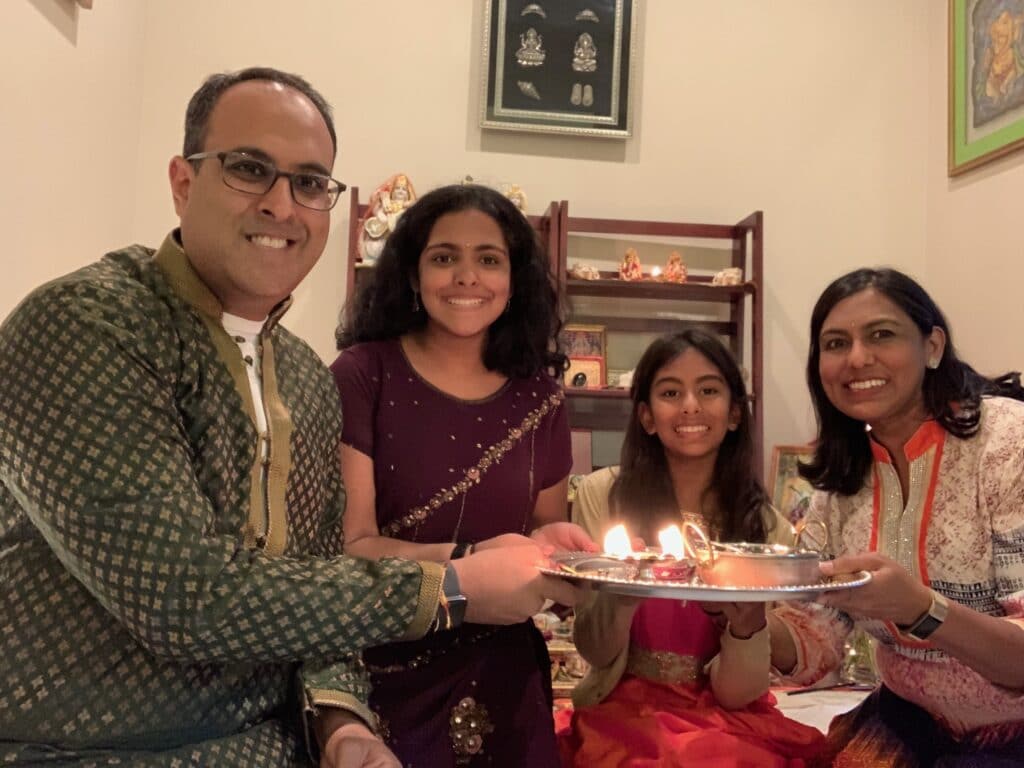
From northern India, Seema Gupta has been celebrating Diwali with her Hindu family in Peachtree Corners for eight years. Based on the lunar calendar, the days of celebration vary from year to year.
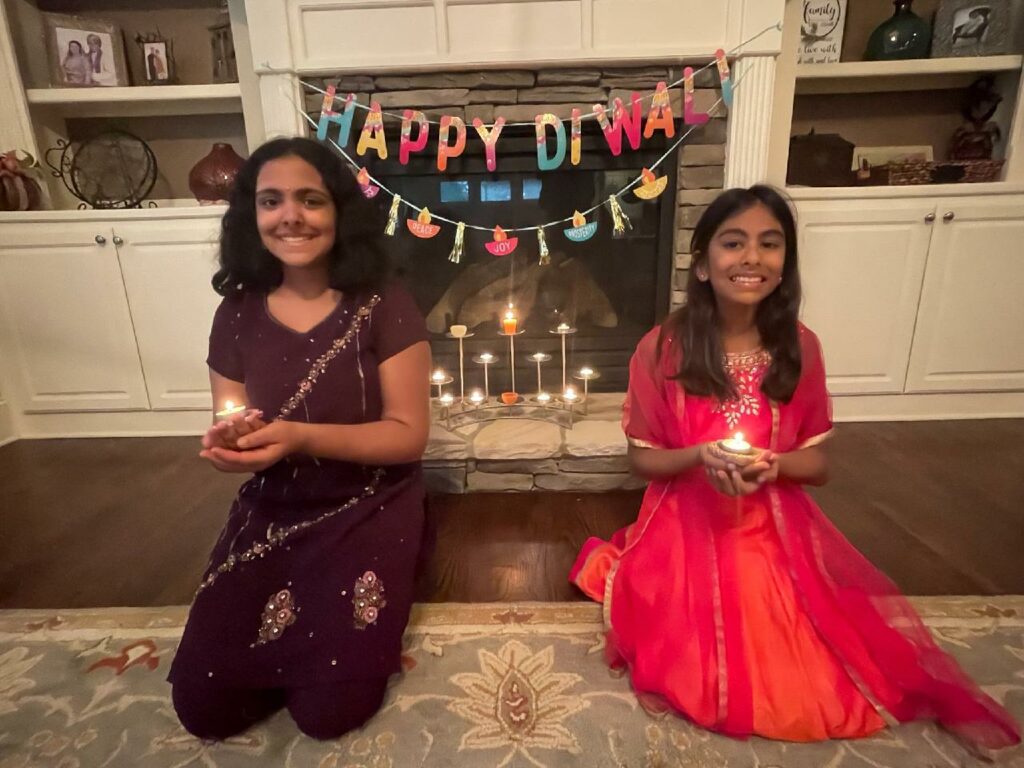
One of the most celebrated holidays in India, Diwali gets its name from the row (avali) of clay lamps (deepa) that people light outside their homes. It’s the celebration of Lord Rama’s return to his kingdom Ayodhya, with his wife Sita and his brother Lakshmana, after defeating the demon-king Ravana and serving 14 years of exile.
“We love to dress in traditional Indian clothing, then do a pooja (a worship ritual) at our house, where we offer prayers to Goddess Lakshmi, so that the Hindu New Year is filled with peace, wealth and prosperity,” Gupta said.
“We decorate the entire house (inside and outside) with lights and candles. We also make rangoli with colored rice. Afterwards, we enjoy a delicious Indian feast with family, and light sparklers and fireworks at night.”
Shared traditions
“We have enjoyed going to the BAPS Shri Swaminarayan Mandir (Temple) in Lilburn to see an amazing display of fireworks,” Gupta added. “Diwali is like Christmas and New Year’s Day wrapped into one big holiday! We love sharing the traditions with our children and celebrating with family and friends.”
Celebration of family
Vipul Singh was born in Patna, India and celebrates Diwali with his multicultural family in Peachtree Corners since their recent move here. He grew up in a Hindu household, cherishing Diwali as one of the most important festivals of his childhood, while his wife Lindsay was born and raised in Pennsylvania.
With several origins in the Hindu religion, most families celebrate Diwali across five days as a victory of good over evil and the start of a new year. Some take holidays to distribute gifts to friends and relatives. It’s a time for families to reset and take time to check on their well-being over the past year.
Traditions and memories
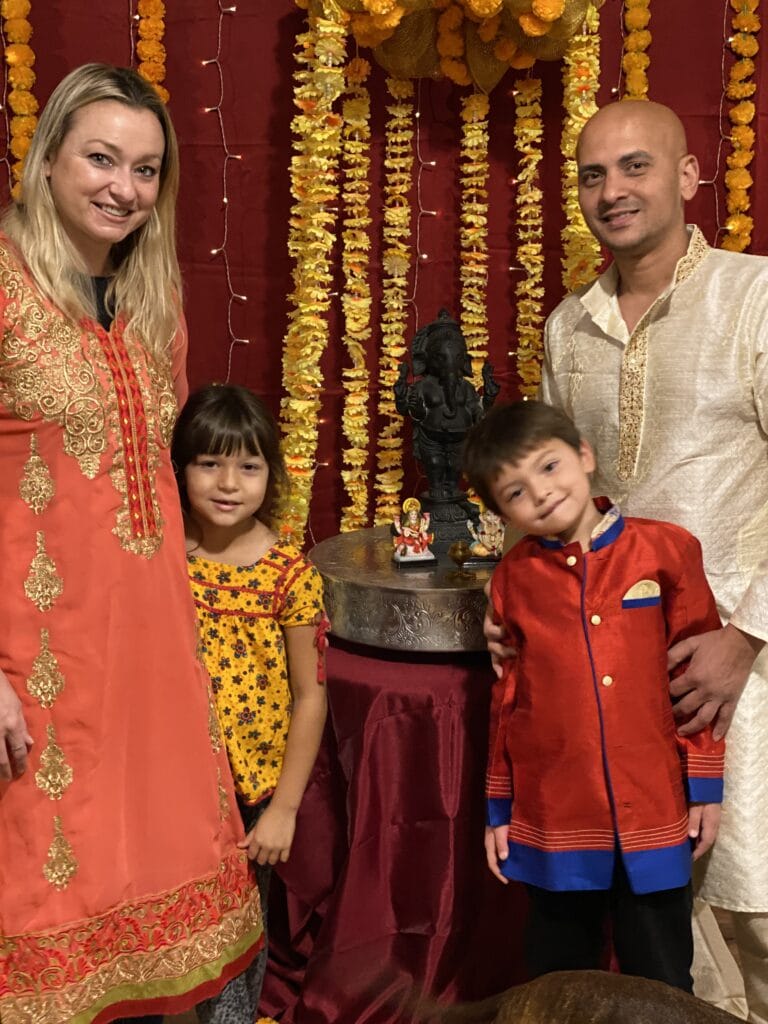
Singh said his family traditions include “meeting family and friends, enjoying Indian food, and fireworks, placing lights outside which stay on until Christmas for neighbors to enjoy.”
Children often travel hundreds of miles to visit parents. It’s a time of gathering and rejoicing. People decorate their homes after a fall clean-up.
“There were lots of fireworks the year my younger sister was born,” Singh said. “Daughters are considered a version of Goddess Lakshmi (Goddess of wealth), so we celebrated a bit more.”
His favorite feature of Diwali, he said, is seeing the joy in the eyes of the kids.
Hanukkah November 28-December 6
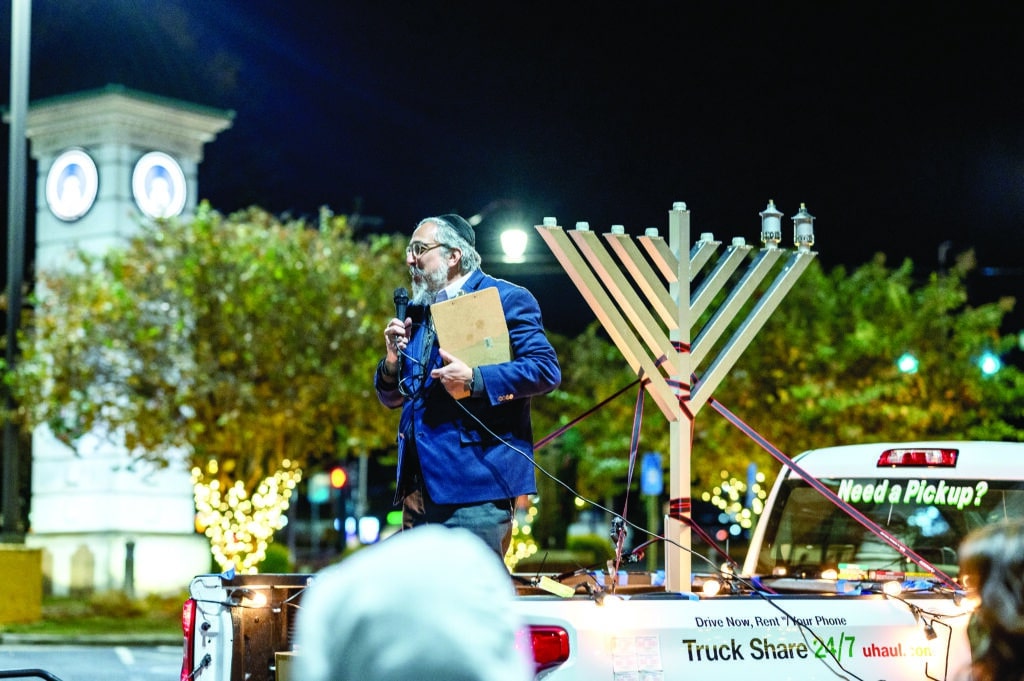
Spiritual leader of Judaism, Rabbi Yossi Lerman is President of the Chabad Enrichment Center of Gwinnett. He’s been celebrating Hanukkah in the Peachtree Corners area for 20 years and delivers an exceptionally concise and interesting account of the origins of the Jewish festival of lights, “Hanukkah epitomizes a determination to see life through a positive lens.”
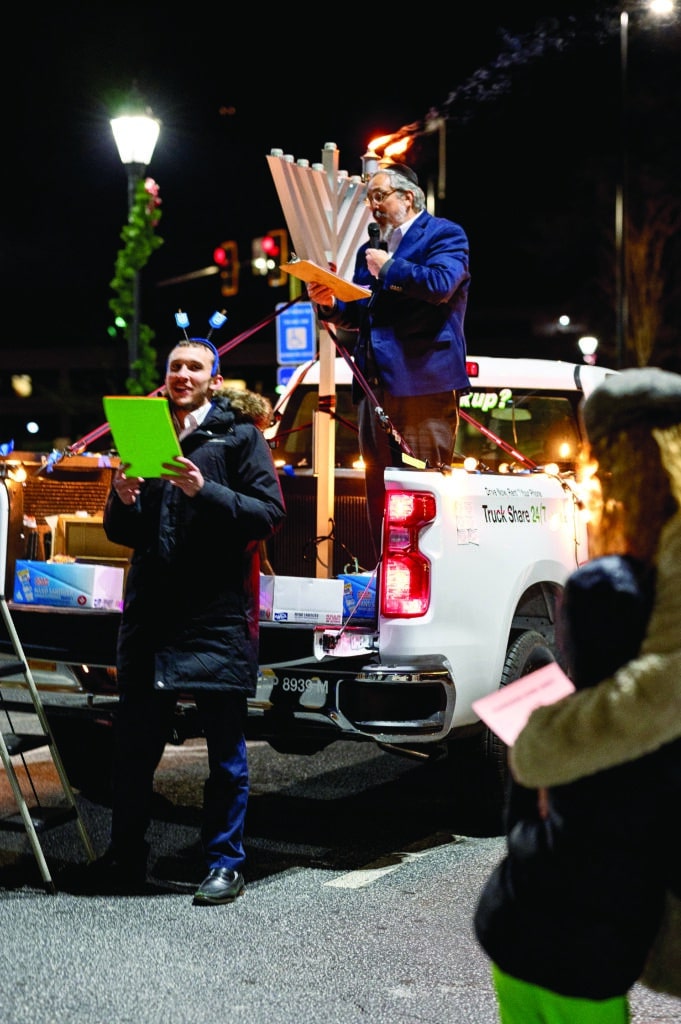
Under Alexander the Great, the Greek and Hebrew cultures were allowed to flourish simultaneously. When Antiochus Epiphanes reigned in Jerusalem (175-164 BCE), he was tyrannical, forcing his Greek ways upon the Jewish people.
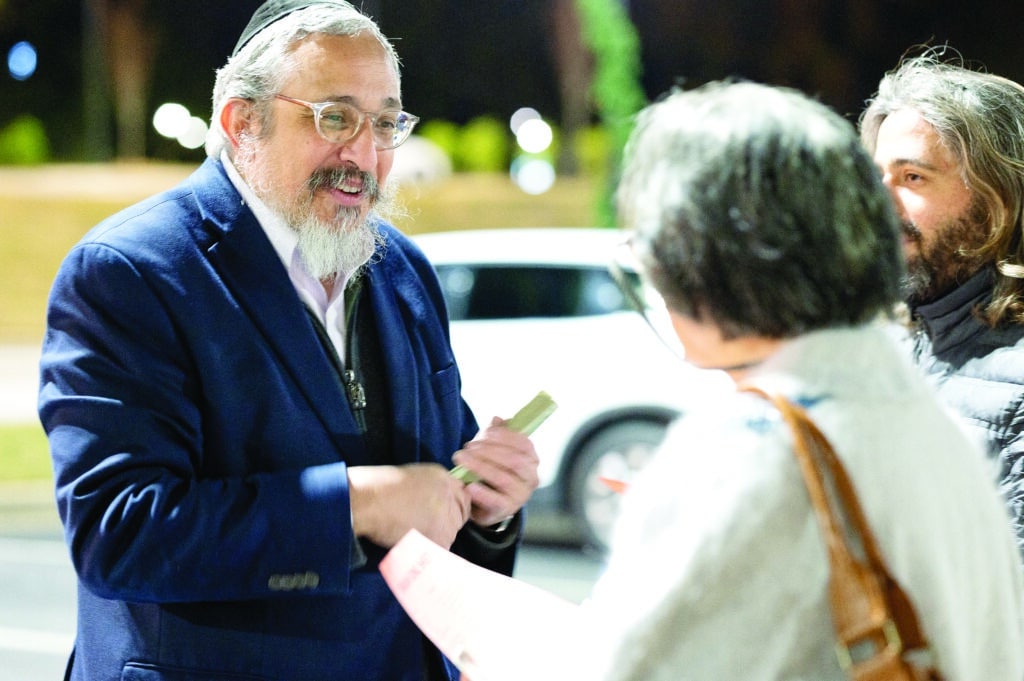
Religious observance
Hanukkah commemorates the military victory of the Jews revolting and regaining access to the holy temple that had been desecrated by the Greeks (which was a miracle in itself: a small band of Jewish fighters against the mighty Greek forces) as well as the miracle of the oil.
Finding only one jug of oil intact after the Greeks had vandalized everything, they lit the menorah (candelabra) which should only have lasted one night. Instead, it lasted eight days, giving them time enough to produce new oil. They had to travel to the Judea hills, where olive trees grew, to make new olive oil.
“We don’t like to talk about war, or even celebrate the fact that we won that war,” Rabbi Lerman said. “We do celebrate the miracle of finding the jug of oil and its lasting eight days instead of one, so we call it the Festival of Lights. We’re into the constructive message. If we can turn the lights on, we can have a positive perspective on life.”
Traditions and memories
The rabbi shared some Hanukkah traditions:
■ Foods that are baked or fried in oil, like potato latkes and fried donuts made with various fillings like cream or jelly, to memorialize the jar of oil through which the miracle occurred.
■ Lights are kindled every evening for the eight days of the holiday.
■ Children play dreidel (spinning the Hanukkah top).
A favorite memory is getting Hanukkah gifts for eight days. (Hanukkah gift-giving predated Christmas by 200 years). “The main emphasis is getting the children excited,” Rabbi Lerman said.
“Gelt is the Yiddish word for money. I give cash instead of gifts to my seven children, encouraging them to spend some, save some and give some away,” he said. “This becomes an educational piece on how to use money in life.”
Another favorite aspect is the public menorah lighting, Rabbi Lerman said. “We’ll be doing four outdoor menorah lightings in Gwinnett County, open and free to the public in Duluth, Suwanee, Lawrenceville and one at the Forum on December 5th.”
Saint Lucia Day December 13
78-year-old Realtor Christine Robinson was born in Lulea, in northern Sweden, where she grew up in the Christian traditions of the Lutheran church and was educated through college. For 37 years, she has kept the holiday traditions of her native royal kingdom alive in this area, well before it became incorporated Peachtree Corners.
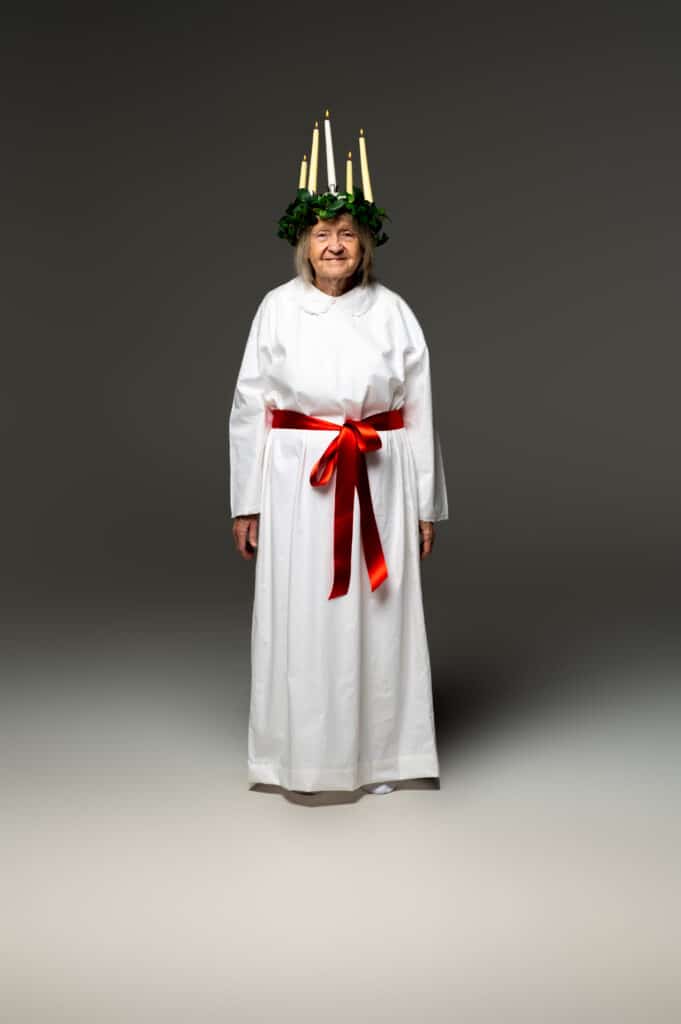
Saint Lucia Day is celebrated by Lutherans, Roman Catholics and Anglicans. It’s the story of a young Christian girl from Syracuse, Sicily, who was brutally martyred by the Romans in 304 CE.
Legend has it she wore a crown of candles to light her way as she brought food to persecuted Christians hiding in the Roman catacombs.
All of Sweden celebrates the Queen of Light — every city, airline, school, hospital, nursing home and church.
Family traditions
A beautiful young lady wearing a long white dress and a crown of live candles on her head comes early in the morning with her attendants behind her carrying one candle each, singing the famous Italian song, “Santa Lucia.”
“Where I’m from, the sun doesn’t come up for two months in winter because it’s so far north, so it’s quite something to see. It’s very special,” Robinson said.
“I’ve observed this tradition with my children, neighbors, friends and grandchildren over the years. I invited young girls to my home (to be my attendants). We’d all wear the long white gowns. I decorate the crown with fresh greenery. I turn off all the lights in the house, light the candles, turn on the music and sing.”
She added, “Some of the young boys watching said, “This is what it must be like in Heaven. You look like angels.””
Fondest memory
Robinson always enjoys seeing “all the girls in white gowns arriving, Lucia with the candles on her crown.” She shared a special memory: “The first time my daughter was Lucia, she was two years old. I dressed her up as Lucia with battery candles. She knew exactly what to do. She even served the Lucia buns (saffron bread rolls).”
Advent November 28-December 24
Robinson also celebrates Advent during the four weeks leading up to Christmas in keeping with Christian churches of the western tradition: Catholic, Anglican, Episcopalian, Lutheran and some Protestant churches. Every Sunday during mass, a candle is lit on a wreath presented horizontally, in preparation for the coming of Jesus Christ. The candles symbolize hope, love, joy and peace.
Family traditions and memories
On the first day of Advent, a star of paper, straw or metal goes up in one of the windows in every household, to recall the star that the three wise men followed to Bethlehem. “My dad put a lamp inside our paper star,” Robinson said.
“Advent starts four Sundays before Christmas. We would gather as a family, turn the lights off and light the first candle on the first Sunday, and then one more each Sunday until Christmas,” she continued. “My dad read from the Old Testament how it was declared that a child would be born. We had a little prayer.” Then her mother played the piano, and the family sang Christmas songs and ate gingerbread cookies.
“We had an Advent calendar with small boxes; you open one per day,” Robinson said. “Now they have candy or presents, but I was born during the war; we were so poor.” “We had little pictures in our boxes; it could be of a Christmas tree, a squirrel, a bird, candles. We were excited just to open the box to see what the picture was,” she added. “I took turns opening the boxes with my two younger brothers, sometimes cheating and peeking in the boxes ahead of time.”
Christmas December 25
The same Christian churches that celebrate Advent celebrate Jesus’ birthday. Christians believe that Jesus is the son of God, born as man to save us from our sins, the Messiah foretold in the Hebrew Bible and the Christian Old Testament.
Family traditions
Robinson said that, in Sweden, her family brought the tree in on the 23rd “and decorated it with our famous straw ornaments, ginger cookies and handmade ornaments. Today I start decorating much earlier. I have 11 Christmas trees. My Christmas room full of decorations is sacred.”
She does a lot of special cooking and baking in December. “I bake Swedish cookies; jam, gingerbread, oatmeal, a jelly roll (with my own jam) and saffron bread,” Robinson said.
“We used to order ham from Chicago – they prepared it like in Sweden, not like Honey Baked Ham. It’s more like country ham. Christmas meal is ham and potatoes (casserole or mashed), some different vegetables here, and in Sweden, rice porridge for dessert.”
For Robinson’s family, Santa comes in person to deliver gifts on Christmas Eve. “He knocks on the door asking, “Are there any nice kids in this family?” In the 40s after the war, we got three presents each,” she shared. “One was practical (clothes, skis), a toy and a bag of candy that we’d never get during any other time of the year. There was no money for candy. We opened gifts on Christmas Eve.”
Fondest memories
Robinson fondly remembers “being with family — aunts, uncles, cousins. Playing games, singing and eating.”
Her favorite part is “celebrating Christ’s birth!” she said. “On Christmas morning the old churches in Sweden ring the church bells, some of them over 500 years old. The service starts at 7 a.m. Only candles light these big old churches. The Pipe organ plays, and the choir sings traditional carols like “Silent Night.” I can still hear and feel the incredible voices and message of hope and peace ringing out in churches!”
The Twelve Days of Christmas
Peter Molloy was born in Ireland and raised as a Catholic. He’s lived in Peachtree Corners since 2005. Unlike many Americans, he still observes The Twelve Days of Christmas, the period between Jesus’ birth and the arrival of the Magi that has been celebrated since before the Middle Ages. That’s what “The Twelve Days of Christmas” song refers to — the 12 days after the birth of Jesus, to the Epiphany.
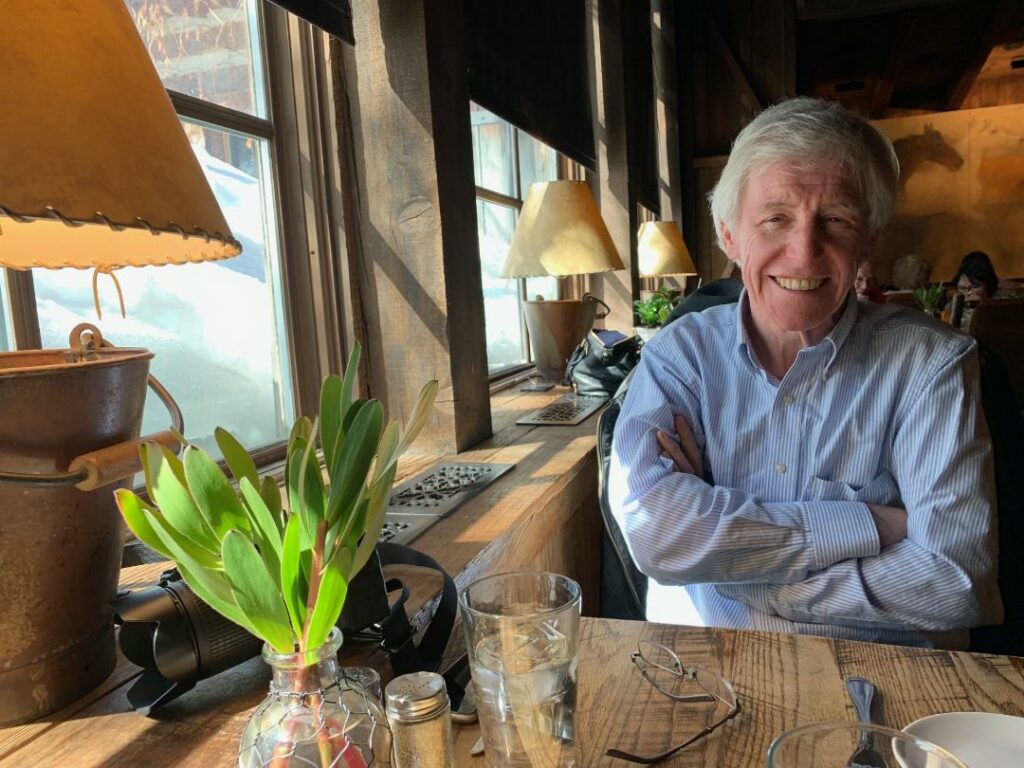
Religious observance
Molloy said he’s always focused on the religious component of Christmas growing up. “I spent most of my childhood in Ireland. Christmas did not truly start until Christmas Eve and continued until January 6th, Little Christmas.” Also known as The Epiphany, it’s the day the three wise men went to see baby Jesus in Bethlehem led by a miraculous star, and offered him gifts of gold, frankincense and myrrh.
Christmas decorations didn’t go up until after the children went to bed on Christmas Eve, according to Molloy. “Then they stayed up until Little Christmas. I do put the decorations up earlier now.”
“I’m truly bothered when people dispose of their Christmas tree on the day after Christmas,” he said. “Don’t they realize Christmas has just started?”
Peter Malloy livestreams the mass on the church YouTube Channel. He said, “We probably have the best live-streaming with a four-camera system. Watching, you can appreciate mass more than you would sitting at the back of the church.”
Traditions old and new
Molloy said he has fond memories of “going to midnight mass on Christmas Eve with our family doctor and close family friends, the Fall family.”
These days, he’s very involved with his church — Mary Our Queen Catholic Church. “I help usher all four masses on Christmas Eve and then go back on Christmas morning to attend mass,” he said. “Our church is beautiful at Christmas; it’s a joy to be there over the Christmas season.”
He’s part of a group of close friends that have agreed to pick one name out of a hat; each person is only allowed to spend $100. “This simplified gift giving is a lot more fun,” Molloy said. “It greatly reduced the stress of Christmas for us and allowed us to enjoy our friendship without worrying that someone might be disappointed.”
“We all finally get to slow down for a couple of days,” he continued. “In Ireland the country shuts down for a few days. I wish stores would not be in such a big hurry to open back up. I’ve never gotten over how commercialized Christmas has become. I suspect this is also the case in Ireland now.”
Family and food
Bruno Chidozie Okonkwo moved to Peachtree Corners in 2018. He is from the southeastern part of Nigeria, Imo state, in west Africa. His native language is Igbo. His wife, Rita, attended Peachtree Elementary School. They were married at Mary Our Queen Catholic Church.

“We are Catholic Nigerians,” Okonkwo said. “During Advent we say prayers to prepare our hearts for the birth of Christ. We attend Christmas Day mass.”
Large quantities of food are prepared to have ready for guests, he explained. Favorite dishes include fried chicken; roasted goat; jollof rice with a base of tomato sauce, oil and spices; nkwobi (cooked cow foot); fufu (doughy balls of cassava) with egusi soup, prepared with ground melon seed, goat meat, crayfish, palm oil, bitter-leaf or spinach, onions and dried mackerel; ukwa (African breadfruit seed) prepared like black eyed peas; and ugba (shredded oil bean) salad. A popular drink is fresh palm wine.
“We like to travel to Nigeria as often as we can during Christmas time,” Okonkwo said. “In Nigeria, most travel to “the village” (hometown) from the city to celebrate. My family did so every Christmas season until just after New Year’s. It’s a special time for reunions with extended family and friends. My siblings, cousins and I would visit relatives’ homes where we were welcomed and fed by our aunties.”
These visits made according to market days are called Erigwara (eat mine, I eat yours) — a wonderful custom. There are four market days in Igboland: Eke, Orie, Afor and Nkwo. Every village has a market day. “We visit relatives and friends according to their market days and eat any food they’ve prepared,” he said. “On our market day, Eke, we expect friends and family to come spend all day eating and drinking.”
Traditions and memories
“Weeks in advance, we decorate our home and put up a Christmas tree and a nativity both here and in Nigeria,” Okonkwo said. “After mass on Christmas Day, we come back home to cook, eat and be merry. At mass in Nigeria, we sing hymns in both Igbo and English. Here we attend mass at Mary Our Queen.”
Gifts are opened prior to Christmas Day in Nigeria. “If you buy someone clothes or jewelry, it’s called Christmas cloth, and they will likely wear it on Christmas Day. Here, we open gifts when we come back from mass,” he explained.
Okonkwo’s favorite holiday memories are the family reunions, and his favorite part of Christmas is “being reminded of the gift of our Christian faith and celebrating it with dear ones — the celebration of God’s love for mankind.”
Kwanzaa December 26- January 1
Kwanzaa is a celebration of African American culture. Founder and Director of the Georgia Wholystic Center Wiletha Williams celebrates both Christmas and Kwanzaa. She has called this area home for 37 years.
A time of learning, family and celebration
Williams explained that Kwanzaa isn’t religious, it’s cultural. “We have been celebrating Kwanzaa in Peachtree Corners since 1994. We usually pick a Friday or Saturday between December 25 and December 30. We send an invitation to friends and family.”
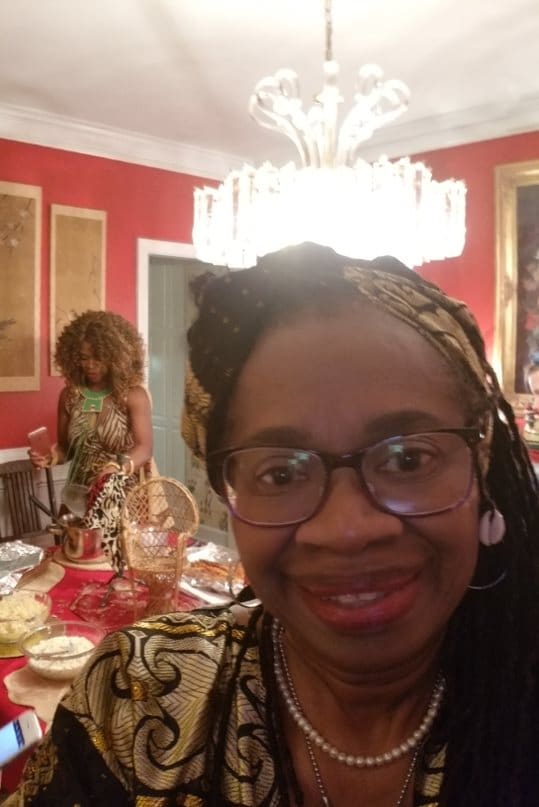
People come together to feast, honor ancestors, affirm their bonds and celebrate African culture. On each of seven days, a candle is lit, highlighting that day’s principle. Reciting sayings or writings of great Black thinkers and writers, original poetry, drumming and sharing a meal bring the principles to life.
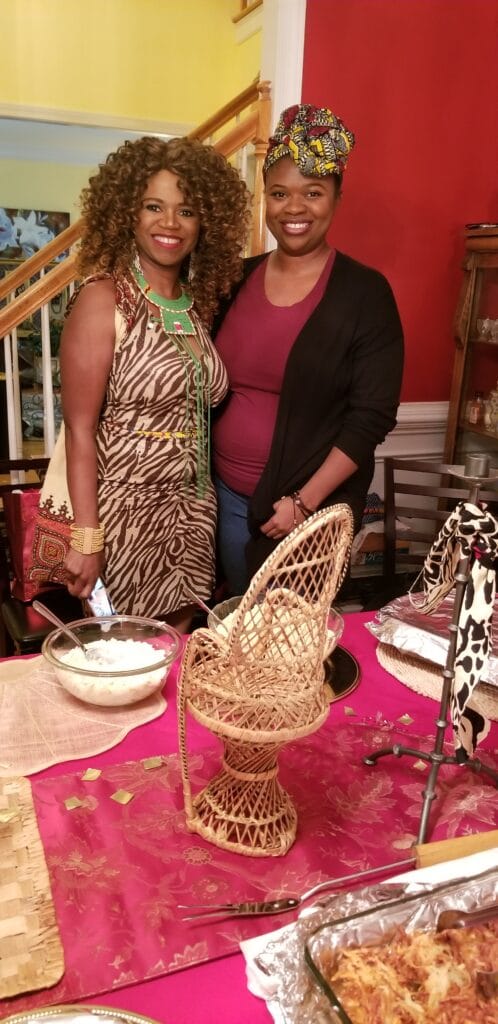
Table decorations include the symbols of Kwanzaa: the Kinara (candle holder), Mkeka (mat), Muhindi (corn representing the children), Mazao (fruit representing the harvest) and Zawadi (gifts).
Traditions and memories
“I love Christmas trees and other decor, music and cooking family favorite recipes: turkey, dressing, macaroni and cheese, green bean casserole, potato salad,” Williams said.
“For my 70th birthday, my son surprised me. He chartered a helicopter which picked us up in front of our house in Amberfield. After a tour of Atlanta, we landed at the 57th Fighter Group for dinner.”
Her favorite part of the holiday is spending time with family and friends, watching sports and movies. “Everyone brings a dish to add to the feast, while we provide the basics,” Williams said.
“We play games related to Kwanzaa facts, such as how the holiday was started in 1966 by Dr. Maulana Karenga in California.”
The family also discusses the Seven Principles of Kwanzaa:
• Umoja (unity in the family, community, nation and race),
• Kujichagulia
(self-determination),
• Ujima (collective work
and responsibility),
• Ujamaa (cooperative
economics),
• Nia (purpose),
• Kuumba (creativity) and
• Imani (faith).



“Everyone has the opportunity to perform dance, poems, songs or whatever they want. Music and dancing are enjoyed by all,” Williams said. “We try to get the children interested. Often, we honor ancestors by sharing pictures and stories of their lives.”
She said that, of course, the highlight is the feast (Karamu), which consists of a variety of traditional and contemporary dishes, including Southern dishes like collards and lima beans, buffalo wings, chili, sweet potato pie and cakes.
Chinese New Year February 1
Jun Lin emigrated from China in 2007 and has resided in Peachtree Corners for eight years. She observes Chinese New Year with her multiethnic family within the constraints of American work schedules and HOA covenants.
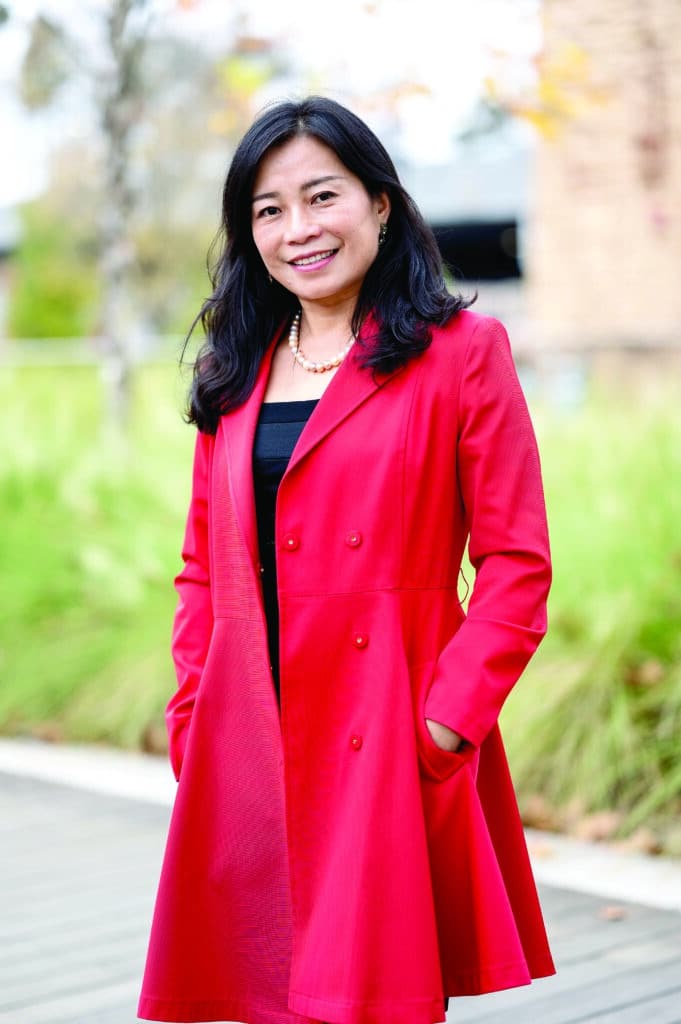
Chinese New Year is not a religious observance. Based on the lunisolar Chinese calendar, it’s the biggest cultural holiday celebrated in China and other Asian countries. It usually falls on the second new moon after the winter solstice, marking the transition from one Chinese animal zodiac sign to the next. 2022 is the year of the Tiger.
Chinese New Year is also known as Lunar New Year and Spring Festival. On the calendar of solar terms, the start of Spring falls on February 5th. It’s not necessarily a reflection of meteorological reality, yet it represents heading towards Spring and new beginnings.
Some businesses start two to four weeks before, and continue festivities two to four weeks after, the New Year. It’s the longest holiday and creates a massive travel rush known as Spring Movement.
Family traditions
“It was my favorite holiday when I was a kid because we got new clothes and gifts from our parents,” Lin said. “The whole month was a time to visit relatives.”
“Growing up, families started food preparation a month ahead since we didn’t have refrigerators. People bought pigs in the village where farmers would slaughter and butcher them.”
The pork would be brought back, seasoned and left to marinate for days. It was then set atop dried branches of pinewood and smoked, resulting in a month’s supply of meat similar to bacon.
“Two weeks before, my mom would soak sticky rice and then grind it into powder. When guests came to visit, she would cook the smoked meat and make Tangyuan, a soup of sweet rice balls with brown sugar, orange peel and sesame inside. The round shape signifies full accomplishment,” Lin explained. “Everything smelled and tasted so good, it was the taste of Chinese New Year.”
Fond memories
She added that on New Year’s Eve everyone watched a gala on TV which showcased popular songs, dances and comedians. “It was fun. Everyone talked about it afterwards.”
To decorate for the New Year, red scrolls and couplets are posted on both sides of the front door with auspicious words. Red lanterns are hung at the door to guide good luck into the home and ward off bad luck.
“In China, the whole city is illuminated, but outdoor decorations are not allowed after January 7th here, so I don’t decorate,” Lin said.
In Chamblee, the Chinese community has ceremonial dragon and lion dances, musical performances, art and authentic cuisine in Chinatown Mall.
One of Lin’s special memories is “being with [her] mother. I loved her with all my heart. We normally took family photos. It was the only time we were all together.”
She said that here, the visits with family and friends don’t last a full month, since it’s not a national holiday, “but we do get together.”
Wishing you all things bright and beautiful this holiday season!
As sundry as our holiday beliefs and practices may be across cultures, what unites us rings out loud and clear. Whether it’s the candles in the Diwali clay pots, the Hanukkah Menorah, the Advent wreath, Saint Lucia’s crown, the Christmas lights, the Kwanzaa Kinara or the Chinese lanterns, we seem to universally gravitate towards light and goodness.
The common threads that run through our varied festivities — light over darkness, familial and social bonds — speak to what is at the core of our shared values and humanity, making us infinitely more alike than we are different.
Many thanks for making Peachtree Corners sparkle so brilliantly.
Related
Patrizia hails from Toronto, Canada where she earned an Honors B.A. in French and Italian studies at York University, and a B.Ed. at the University of Toronto. This trilingual former French teacher has called Georgia home since 1998. She and her family have enjoyed living, working and playing in Peachtree Corners since 2013.

Business
BRACK: Peachtree Corners to lose Peterbrooke Chocolatier
Published
12 hours agoon
April 19, 2024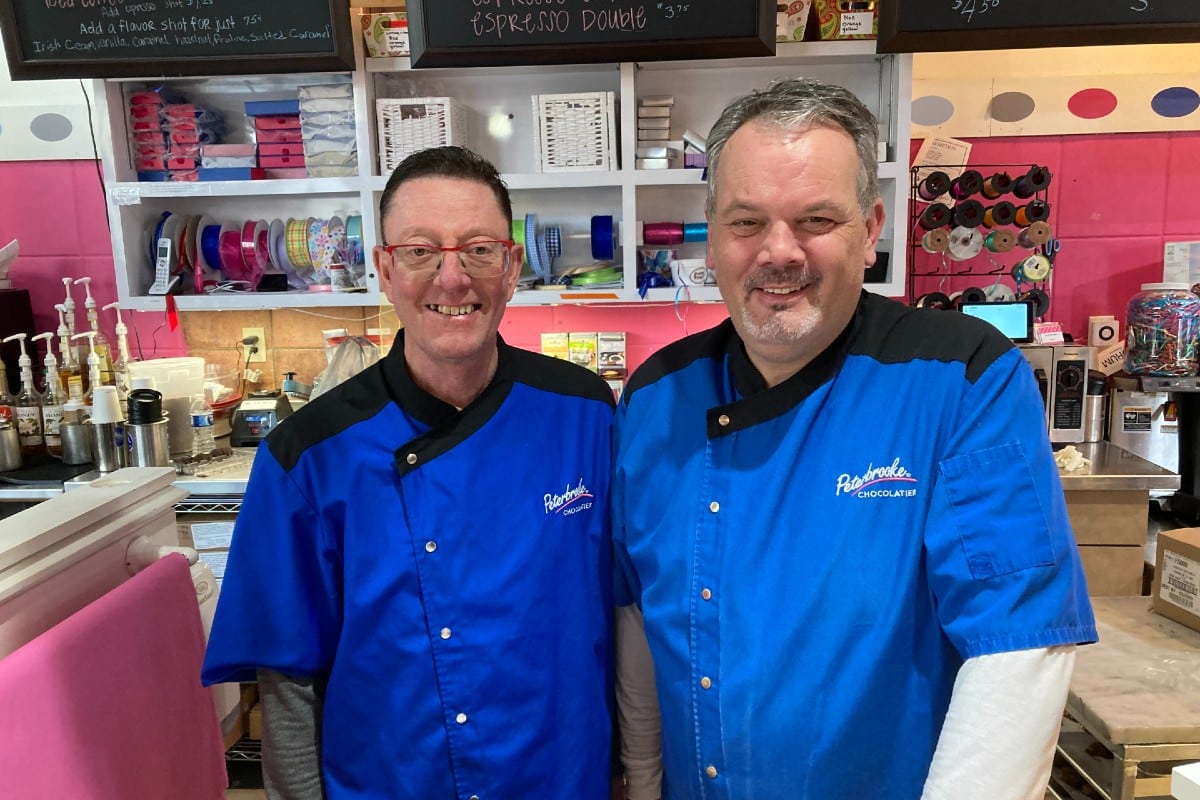
Peachtree Corners will soon lose one of its most iconic, popular and tasty businesses.
Peterbrooke Chocolatier, run by Geoffrey Wilson and Scott Gottuso, has been told by Peachtree Forum landlords, North American Properties and Nuveen Real Estate, that its lease will not be renewed. The last day of business will be July 25.
Meanwhile, Peachtree Forum is getting several new stores. They include Kendra Scott, Sucre, and The NOW Massage. Previously announced were Alloy Personal Training, Cookie Fix, Gallery Anderson Smith, Giulia, Lovesac, Nando’s Peri-Peri and Stretchlab. Wilson adds: “We are not in their big picture.”
Wilson has operated Peterbrooke at the Peachtree Forum for 14 years and Gottuso has been there nine years. They have made the chocolatier profitable and doubled sales. Wilson says: “We turned it around through community involvement and made relationships. We worked with the schools, gave donations, did a lot in the community, and made a difference. We produce most everything we sell in the shop, so it’s labor intensive. We make European-style chocolate treats from scratch from the very best ingredients, package it, make gift baskets, and also sell a lot of gelato.”
Key items include truffles, hand-made caramels, cherry cordials, chocolate-covered cookies and pretzels and strawberries hand-dipped in their own blend of chocolates. (They are all good!) One of Wilson’s and Gottuso’s most iconic products is chocolate popcorn. Once you try it, regular popcorn is tasteless. “We sell a lot of it.” Wilson adds: “Gelato sales have carried us in the summertime, since there are not many chocolate holidays in the summer.”
Peterbrooke now has five employees, and would like to have 10, but it is difficult to hire people with the skills in chocolatiering. A key part of its business is corporate companies, such as Delta Air Lines and Capital Insight. The Peachtree Corners’ Peterbrooke has corporate customers as far away as Cleveland, Ohio.
The operators were surprised when the Forum owners did not renew its five year lease. “The big decisions were made in Charlotte or Cincinnati, not locally,” Wilson feels. “We were no longer in their big picture. They want new and glitzy, shiny, fancy and trendy.”
The operators plan to start their own chocolate company, to be called “Scoffrey,” and initially sell online, plus have pop-up locations during holidays, and possibly have a booth in other merchants’ stores on occasions.
“Whatever we do would look different. We might rent a space somewhere close by so that people can still have the good chocolate experience with us, but we won’t have a regular audience walking by.”
Another element: the price of chocolate futures has spiked this year, with a bad crop production year. Wilson says: “That is key to our business and a huge cost increase. That doesn’t help.”
Wilson adds that the forced closing of the Peterbrooke location “is something like the death of a friend. But you go to the funeral and to the wake, and in six months or a year, It won’t be so bad.”
Have a comment? Send to: elliott@elliottbrack
Written by Elliott Brack
This material is presented with permission from Elliott Brack’s GwinnettForum, an online site published Tuesdays and Fridays. To become better informed about Gwinnett, subscribe (at no cost) at GwinnettForum
Related
Community
The Transformative Trail: Dr. Sunit Singhal’s Journey to Wellness
Published
3 weeks agoon
April 1, 2024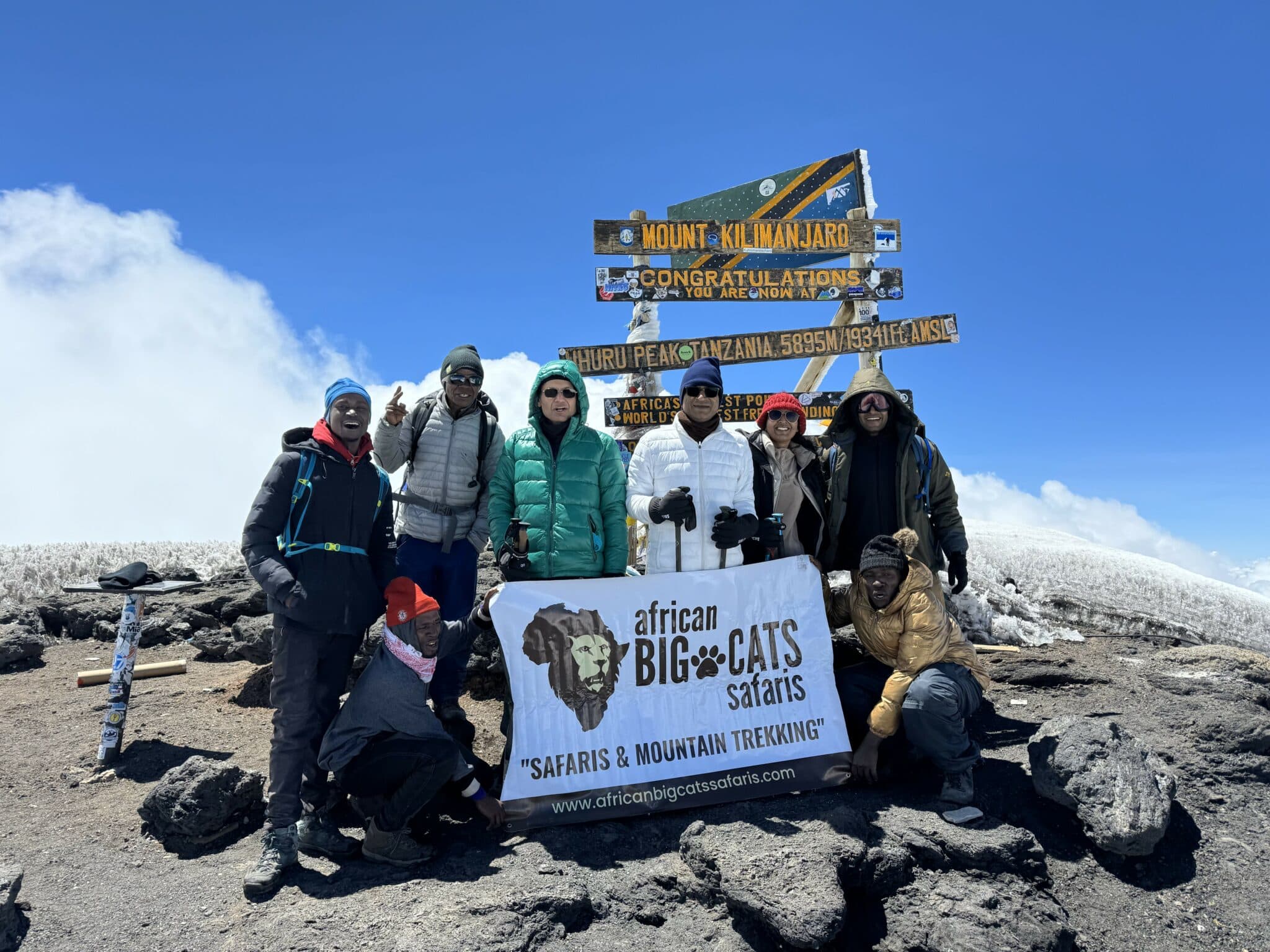
For more than two decades, Dr. Sunit Singhal has been a member of the Peachtree Corners community. In February 2001, he opened Suburban Medical Center, making a significant contribution to community healthcare. Under his leadership, the medical center has expanded, notably by introducing Suburban Med Spa next door.
A 1988 graduate of the University College of Medical Sciences in New Delhi, India, Dr. Singhal furthered his expertise in the United States, completing his residency in Internal Medicine at Harlem Hospital Center in New York.
An awakening at the Grand Canyon
A few years ago, the 60-year-old physician had an eye-opening moment about his own health. Most of his life was spent being overweight, which he accepted and managed the best he could.
“It’s not a secret that I was overweight. Anyone could see it; it’s how I was my whole life,” said Dr. Singhal.
The pivotal moment for Dr. Singhal was his attempt to join friends on a hike at the Grand Canyon a few years back. Despite his determination, Dr. Singhal was unprepared for the hike’s demands.
“I thought, okay, I will meet my friends one-third of the way down the canyon from the opposite end. That way, I can keep up with them towards the end of the hike,” he shared.
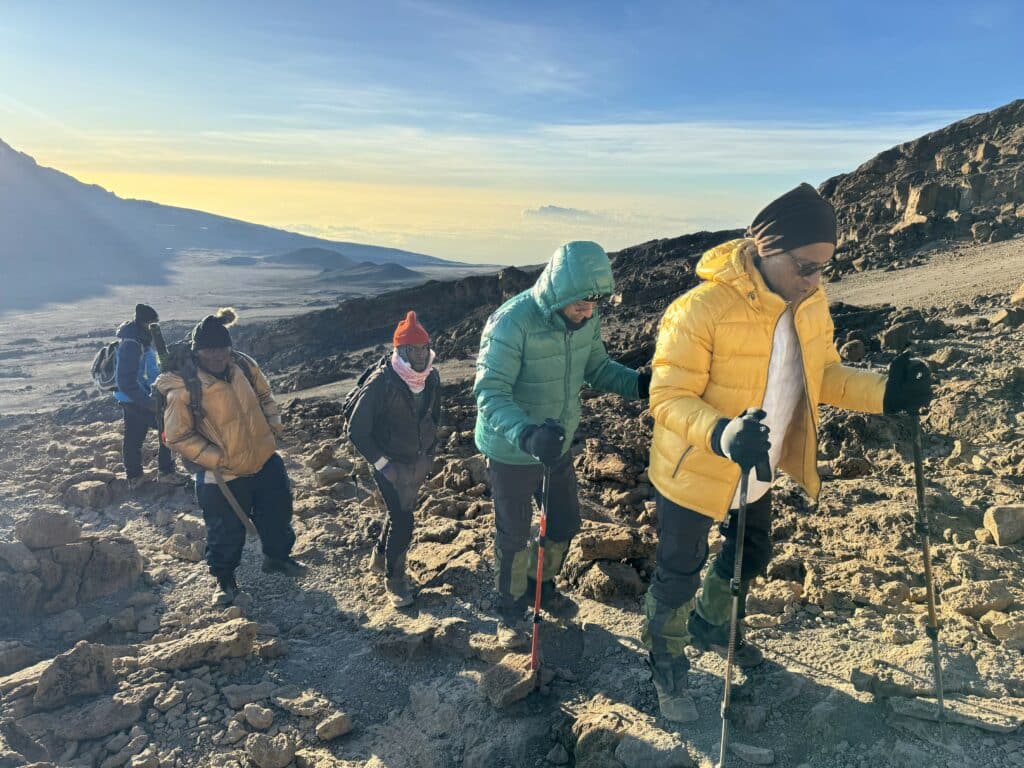
Even starting much later, Dr. Singhal struggled greatly with the hike. He experienced knee pain, breathlessness, and exhaustion. His struggle not only slowed him down but also his friends, who had been hiking for an additional 12 hours before he joined them.
The ordeal ended in the middle of a cold night, leading to a physically taxing recovery period that left Dr. Singhal sore for days.
Despite the arduous experience at the Grand Canyon, Dr. Singhal didn’t retire his hiking boots. Feeling motivated to conquer the obstacle, he began walking long miles with friends to get into shape.
A few months later, the call of the canyon echoed again, and friends proposed a new challenge: hiking from the South Rim to the river and back. While less daunting than their previous endeavor, the task was intimidating.
“This time, I was able to make the hike without holding anyone back,” he shared. Dr. Singhal already saw the difference his efforts were making.
His triumphs over physical and mental barriers were clear and exciting. Dr. Singhal’s return to the canyon increased his resilience and personal growth.
Conquering Kilimanjaro: a test of determination
Following a series of hikes through the Grand Canyon as his health improved, Dr. Singhal and his hiking group set their sights on Mount Kilimanjaro. They regularly engaged in 10-mile hikes each week to prepare for the trek.
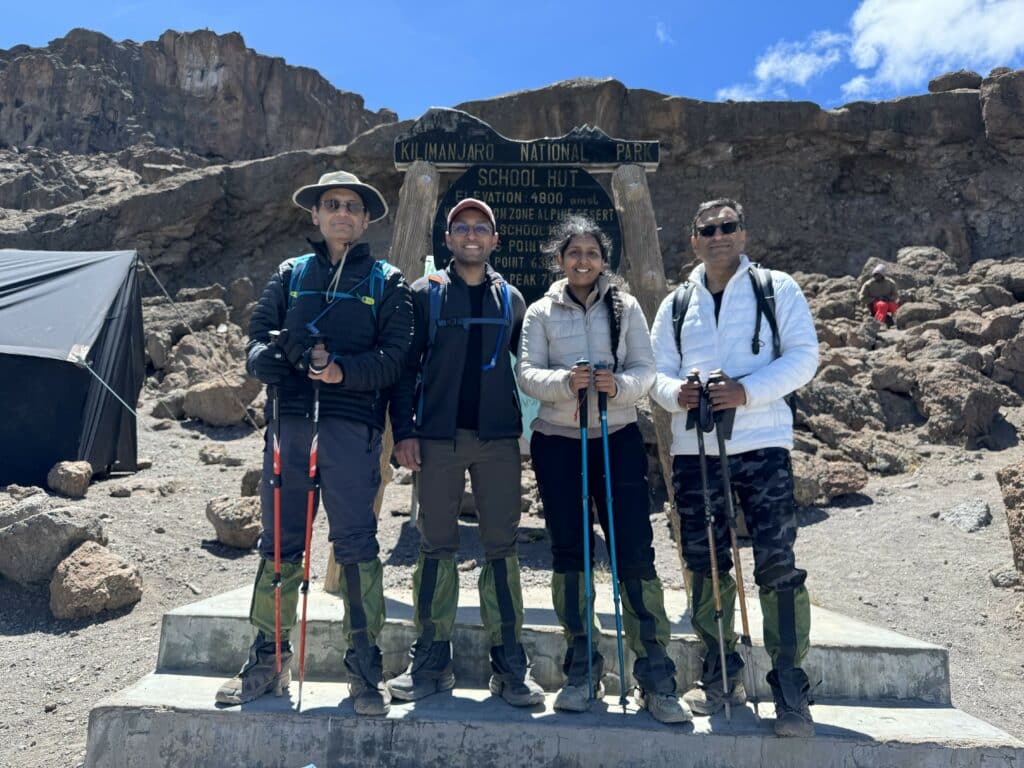
“It was never on our minds to simply skip or cut the hike short because we didn’t feel like it that day,” Dr. Singhal said. Even family members occasionally joined, keeping pace with the senior group with varying success.
When the time arrived for their Kilimanjaro quest, they needed to identify the number of days their group would need to complete it.
“There are different levels you can choose for hikes. If you are very athletic, the 5-day hike is for you. It goes all the way up to 9 days if you need to go slowly,” Dr. Singhal explained.
The friends chose the six-day option. It seemed like a good balance of their confidence in their fitness coupled with a conservative approach. Yet, they completed the ascent in five days.
“We couldn’t believe we finished at such a quick pace. We weren’t straining ourselves to do it. It was the natural pace we wanted to go, and we finished with the group we viewed as the most fit and athletic.”
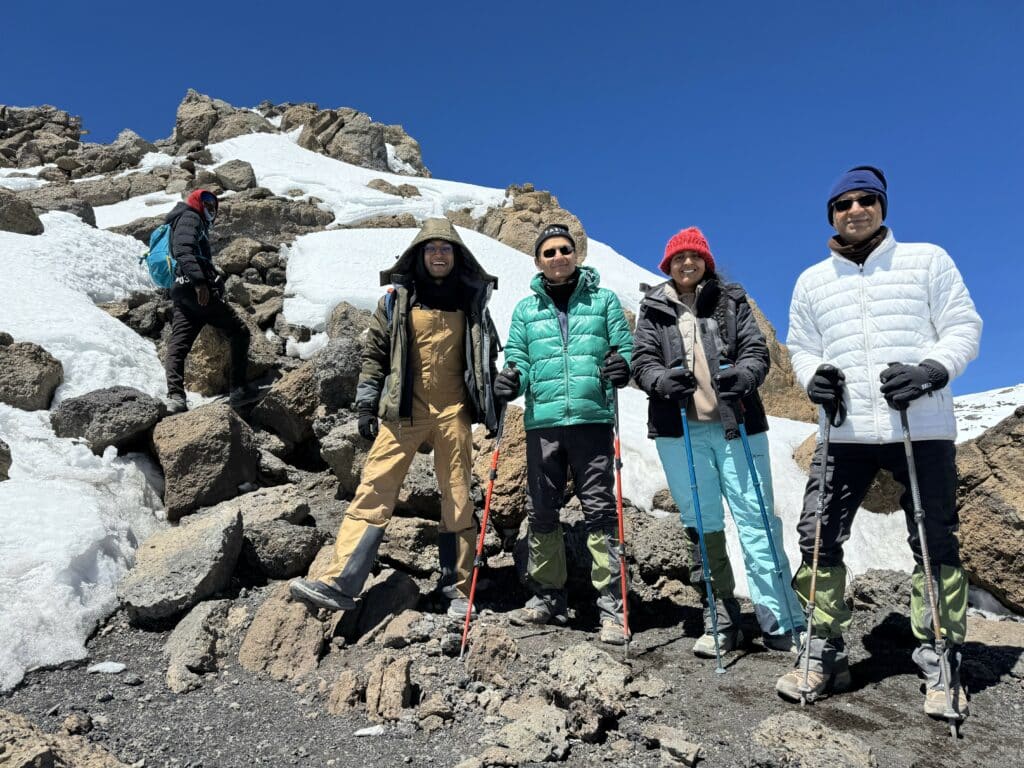


Mount Everest on the horizon
The hiking group isn’t resting on their laurels, though. The crew continues to meet and train for their next goal, climbing Mount Everest.
“There’s a lottery to be accepted to climb. We entered and are hoping to be selected for a hike this fall,” Dr. Singhal shared. When asked if he felt intimidated about this potential hike, he confidently replied, “No, not really.”
The team of friends will hear this summer if they are selected to climb.
Health and hope
Dr. Singhal’s health journey is the perfect example of the potential for change at any stage of life. It also highlights the importance of self-care, perseverance and pursuing one’s goals, regardless of the starting point.
His patients can rest easily. He isn’t walking away from his practice for the mountains full-time. Dr. Singhal is committed to his practice and patients. He firmly believes and displays that personal improvement and professional dedication can coexist harmoniously.
“I want my patients to know that I am equally dedicated to being here for them and their own health journeys.” When he’s not hitting the trails, Dr. Singhal can be found spending time with his family in Duluth or at his practice in Peachtree Corners.
Related
Community
Local Youngsters Learn Life Lessons Through Community Service
Published
3 weeks agoon
March 31, 2024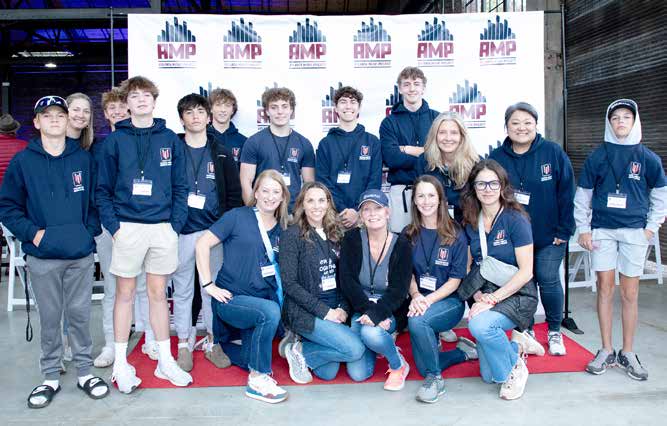
What started 20 years ago with two Texas moms looking for ways to get their sons involved in community service projects while spending quality time together turned into the Young Men’s Service League (YSML).
The national organization has dozens of chapters in 20 states, including Georgia.
Peachtree Corners mom, Heather Fleming, heard of a chapter in the northeast part of metro Atlanta, but it was pretty much at capacity.
“The way the chapters work is each class can only have around 30 boys,” she said.
“The more people you have in your chapter, the harder it might be for people to get hours in and just managing that number of people [can be difficult],” she added.
Taking matters into her own hands
Fleming partnered with another mom whose son couldn’t get into the chapter either to start their own.
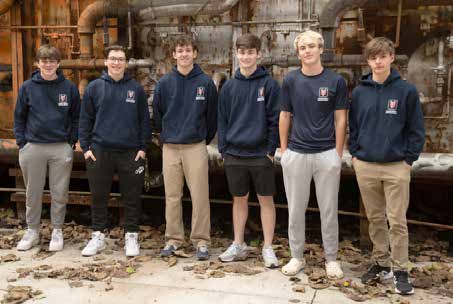
“She was determined that she wanted her boys to be able to have this experience,” said Fleming.
“Our chapter started with a full ninth-grade class , and then the tenth-grade class was a little bit smaller, with around 20 boys,” she added.
Even though it’s a good way for public school students to earn community service hours, most of the participants attend private schools that don’t have that requirement.
They do it to do good in the community and to have fun hanging out with their moms.
“The whole point is that we only have four years left before our sons go off to whatever their next step is after they graduate from high school,” said Fleming.
“It’s just to have that quality time together, serving the community and then also to give them the opportunity to hear from speakers they would not ever necessarily have access to,” she added.
Preparing the next generation
Fleming’s son Luke graduates next year and he’s found fulfillment in YMSL.
“It has been fun serving our community with many of my friends and their moms. I have also learned a lot from the various speakers we have had over the years,” said Luke. One of my favorite speakers was Tyler Hannel, who spoke about how to be a better version of yourself.”
There are many charities that need volunteers, and many align with the skills and interests of the young men.
“My most memorable experiences were serving with BlazeSports at their annual Big Peach Slam basketball tournament the last two years,” said Luke.
“Watching kids my age play basketball from a wheelchair was so inspiring. I am thankful for an organization like BlazeSports that gives kids and adults with disabilities a way to still compete in a variety of sporting events,” he stated.
Tracey Shell and her son, Carson, have similar views.
“Our first year was last year, so I didn’t know about this organization when my older son was in high school,” said Shell. “They learn about things like life skills and leadership, … but the real heart of the organization is volunteering in your community and learning about local philanthropy.”
Each YMSL chapter works with a certain number of nonprofits each year—usually nearby. Although this chapter is called the John’s Creek Young Men Service League, it has members from Peachtree Corners, Norcross, Berkeley Lake, Alpharetta and John’s Creek.
YMSL donates time and energy, not money
Every year, each chapter does what it calls the ultimate gift. This time around, the Johns Creek chapter went farther outside its boundaries and helped the Atlanta Music Project (AMP). It’s a nonprofit organization founded in 2010 to provide tuition-free world-class music training and performance opportunities in under-resourced communities.
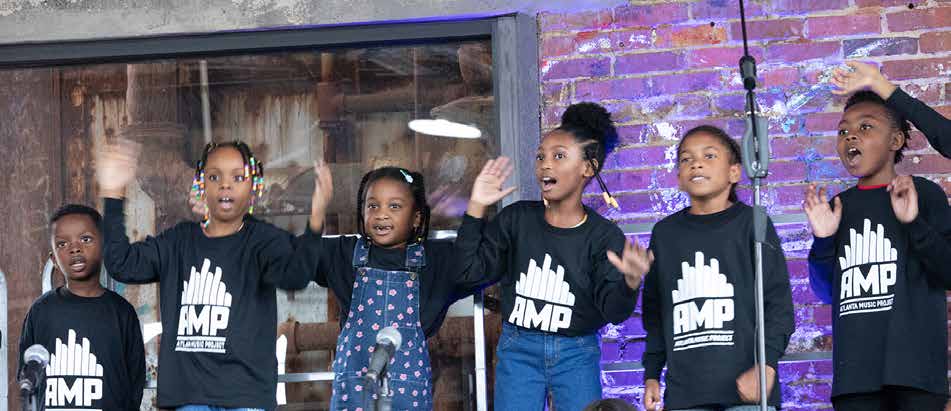
In October, AMP presented its first event, which brought together its entire community of performers for an afternoon of music and fellowship. The AMP Experience took place at Pullman Yards and featured performances from past and present students, with about 500 participants in total.
To pull off such a feat, AMP needed many volunteer ushers and stage crew. That’s where Johns Creek YMSL stepped in, with nearly 80 local YMSL volunteers who gave 246 service hours. Mom and son volunteers loaded instruments, set up and cleaned up, served as parking lot attendants and greeters and supported social media outreach.
Both Fleming and Shell have seen their boys grow and mature and are proud of the young men they are becoming.
“They become more aware of the different nonprofits and philanthropy that are just right in our own backyard that they might not have known about,” said Shell.
Fleming echoed that sentiment. Her older son Andrew is a sophomore at Clemson University, and she’s seen him carry the lessons learned at YMSL into his daily life by being actively involved with service projects in his fraternity and a mission trip over Spring Break.
“He definitely has a heart for helping others, which … is the ultimate goal. When they’re not living at home, and I’m not necessarily making them serve, they want to do this on their own in college and beyond,” she said.
For more information, visit ymsljohnscreek.org.
Related
Read the Digital Edition
Subscribe
Keep Up With Peachtree Corners News
Join our mailing list to receive the latest news and updates from our team.
You have Successfully Subscribed!

April/May Events Going on at Gwinnett County Parks

8 Theatrical Performances Coming to the Peachtree Corners Area

Enter Our Readers’ Choice Awards 2024

North American Properties Secures 3 New Brands for The Forum

Georgia United Methodist Foundation Announces Changes to Finance Team

North American Properties Revitalizes Avenue East Cobb

Exploring Israeli Innovation in the Smart City Sector with Einav Gabbay [Podcast]

BRACK: Peachtree Corners to lose Peterbrooke Chocolatier

BRACK: Peachtree Corners to lose Peterbrooke Chocolatier

Georgia United Methodist Foundation Announces Changes to Finance Team

North American Properties Revitalizes Avenue East Cobb

Exploring Israeli Innovation in the Smart City Sector with Einav Gabbay [Podcast]

North American Properties Secures 3 New Brands for The Forum

April/May Events Going on at Gwinnett County Parks

8 Theatrical Performances Coming to the Peachtree Corners Area

Enter Our Readers’ Choice Awards 2024

Light up the Corners [Video]

Capitalist Sage: Business Leadership in Your Community [Podcast]

Cliff Bramble: A Culinary Adventure through Italy

Top 10 Brunch Places in Gwinnett County

A Hunger for Hospitality

THE CORNERS EPISODE 3 – BLAXICAN PART 1

Top 10 Indoor Things To Do This Winter

The ED Hour: What it takes to Remove Barriers from Education
Peachtree Corners Life
Topics and Categories
Trending
-
Parks & Recreation1 week ago
April/May Events Going on at Gwinnett County Parks
-
Arts & Literature1 week ago
8 Theatrical Performances Coming to the Peachtree Corners Area
-
Readers' Choice Awards1 week ago
Enter Our Readers’ Choice Awards 2024
-
Business1 week ago
North American Properties Secures 3 New Brands for The Forum










